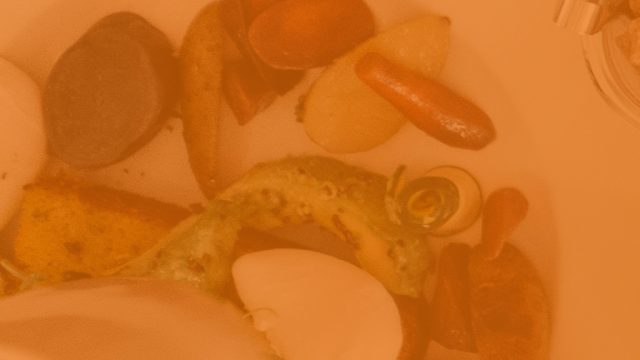There’s a lot that can go into a smart search engine optimization (SEO) strategy, but one question a lot of people ask us is, “What can I do to my website today to improve its optimization and visibility?” That’s a good question. Afterall, while there are many factors that comprise SEO, there are best practices that you can, and should, implement, today, to all websites. It’s the foundational elements that make up SEO best practices – dare I say SEO 101?
While these elements are SEO musts, they are not – in and of themselves – going to make your website soar into Google’s good graces. That said they are worth reviewing. I won’t get into details here in this post (check back later) but they are worth noting. By the way… the first thing you need to do before you even start an SEO endeavor is to build a smart keyword list. Assuming this has been done, here are some key SEO elements that every site should have.
6 Basic SEO Elements All Sites Should Have
- Meta titles. If you hover your mouse over your browser tab, the Meta title is what is displayed. It’s also displayed when you get a search engine result. It’s important to note that you only have about 60 characters, including spaces, so you’ll need to make sure that you only use two keywords. Start with your most important, then your second most important for that page. Maybe it looks something like this:
Digital Marketing Agency – Content Marketing | Digital C4
You don’t need to lead with your brand – in this case Digital C4 – as you will most likely rank for that already. Keep the keyword focus of the page the title describes to two keywords. This focus will help keep the content of that page finite and clear – to both the prospect and Google.
- Meta descriptions. While Meta descriptions are not a Google ranking factor, they can indirectly impact ranking factors so it’s important to not only use them but optimize them around your keywords as well. The key here is to make sure your Meta descriptions accurately reflect the content that the user will find if they click through to your page. If they are misled by an inaccurate Meta description they will likely bounce from your page, which tells Google that your page was not relevant to the search and potentially not show future searchers your page in the search results. You don’t want Google to remove your page from relevant user searches. I wrote an entire blog on Meta descriptions – What You Need to Know About Meta Descriptions for SEO Success – so I won’t bore you with minutia here.
- Header tags. These are the H1, H2, H3s, etc. that make up possible sections of a web page. They are heading titles that describe what’s on the page or a section within a page on your site. Be sure to use a keyword or keyword phrase in them. One important note is that you should only have ONE H1 tag per page, so use your most important keyword there. You can have multiple H2s or H3s; it really depends on how many sections you might have for a given page.
- Site interlinking (anchor tags). The pages of your website should be linked to each other, intelligently. If you’re on your services section and you make mention of a particular service, link that particular service to that service page. If I mention, as example, that Digital C4 provides blog writing and management, it might be wise to link that offering to its respective page (which I’ve done). There’s no need to link every instance of that service or keyword, but once or twice is a good idea.
- Image tags. Make sure all your images are tagged with alt text and title tags. This is another way Google can determine the topic of the page as well as index your images for Google Image Search. If a user searches for a keyword and finds your image, they may be able to click through to your site where the image originated. Most website Content Management Systems (CMS) provide the appropriate fields to fill out when you add images to your site.
- Website copy and keywords. While seemingly obvious, it’s important to use your keywords within the copy of your website. No need to plaster it – or “keyword stuff” – but utilize keywords intelligently and conversationally where it makes sense. Google will know that you used a particular keyword in the Meta title, description, header tags, image tags, and via inter-linking, and will want to see them used within the page copy as well.
These six key SEO elements should be optimized site-wide, with keywords, today. If they are… great! If not… they should be! But, even if you’ve implemented these 6 elements, you have only just begun.
The Most Important SEO Element for Any Website
Your website is optimized… check! So now what? Now comes the hard work… content creation! Most websites have service or product pages that do not change very much or certainly not often. These static pages can get stale quickly. The most important thing you can do for website success is add dynamic content as frequently as you can. For some companies this might be once a week, for others it could be once a day.
Well written blogs and helpful videos (as example) that add new content to your website can have a huge impact on search rankings, site traffic, user engagement, and overall online brand visibility. When paired with social media outreach, dynamic content can really help your business.
ALL of our clients that blog frequently, and those that we write and blog for, see their rankings and organic traffic increase at faster rates than those that do not. It’s a simple, true, fact.
If you work with an SEO agency, but they are not optimizing your dynamic content, there’s a huge missed opportunity there. Blogs, videos, press releases, case studies, even archived newsletters, can and should be optimized prior to going live. Quite often, they are not.
We call this GapSEO™ and its part of the SEO offerings to all our clients. They just send along their content as it’s being created, and we turn around SEO recommendations. When they implement their content, they include our recommended Meta data and other suggestions so that the content works harder; it’s optimized.
Adding fresh content to your website is the most important SEO activity you can do for website success. Make sure it’s part of your marketing plan!







